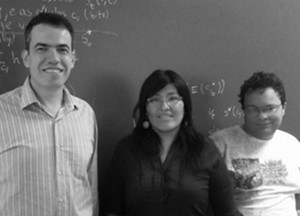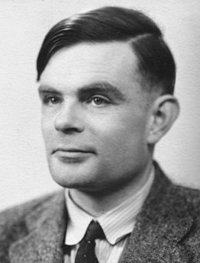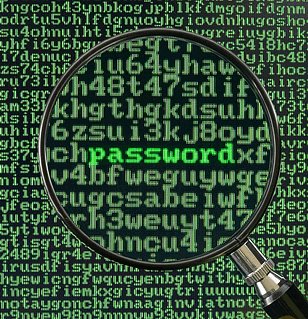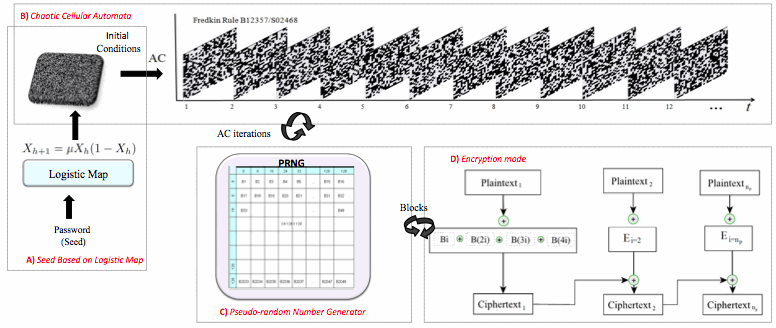CHAOS-BASED CRYPTOGRAPHY: A NEW PROMISE TO ONLINE SECURITY
by IFSC-Assessoria de Imprensa

Computer Science
A team of researchers at IFSC at the University of S�o Paulo is working on the development and improvement of a new encryption system based on chaos theory, more efficient than conventional methods which could offer better security for online financial transactions, for instances, with the advantage of operating at high speed even on devices with limited hardware and low processing capacity.
A bit of history
 Alan Turing, an English mathematician and computer scientist, widely considered to be the father of computer science, set the first breach to the historical development of cryptographic systems and artificial intelligence. Turing was a pioneer in the exploration of nonlinear dynamics systems since early decades of the twentieth century, Turing though about a mathematical methodology called cellular automata --- a set of separate entities that interact with each other, performing some specific tasks. Thus, this method is rather linked to nature, but can also be approached from the viewpoint of pure mathematics(as the two approaches proposed by Turing).
Alan Turing, an English mathematician and computer scientist, widely considered to be the father of computer science, set the first breach to the historical development of cryptographic systems and artificial intelligence. Turing was a pioneer in the exploration of nonlinear dynamics systems since early decades of the twentieth century, Turing though about a mathematical methodology called cellular automata --- a set of separate entities that interact with each other, performing some specific tasks. Thus, this method is rather linked to nature, but can also be approached from the viewpoint of pure mathematics(as the two approaches proposed by Turing).
In the 80's Stephen Wolfram, works in the development of software for solving issues in various fields of knowledge, Wolfram devoted much of his life to research the methodology proposed by Turing, indicating the possibility that all random processes of the Universe can be generated by cellular automata.
Cryptography
 Generation of random numbers, has numerous applications in science, from solutions for experiments in physics to technology security - cryptography. The proposed research project is a new use of cellular automata, as a generator of very strong pseudo-random numbers, and consequently a strong encryption. The advantage of this encryption system is its speed of processing, as well as the easiness to be implemented in mobile phones or hardware devices with lower capacity. "We have a system that can be implemented in hardware because it is not a heavy algorithm" explains Odemir Bruno, professor at the Interdisciplinary Computing Group of the IFSC and responsible for developing of the project.
Generation of random numbers, has numerous applications in science, from solutions for experiments in physics to technology security - cryptography. The proposed research project is a new use of cellular automata, as a generator of very strong pseudo-random numbers, and consequently a strong encryption. The advantage of this encryption system is its speed of processing, as well as the easiness to be implemented in mobile phones or hardware devices with lower capacity. "We have a system that can be implemented in hardware because it is not a heavy algorithm" explains Odemir Bruno, professor at the Interdisciplinary Computing Group of the IFSC and responsible for developing of the project.
In general, the main benefit of this development is the promise of better security in banking and commerce via Internet, which brings to mind a similar project by the same researchers, published in 2010, which gained notoriety for combining an innovative way to traditional method of encryption to chaos theory. "Somehow, we see an ongoing battle between those who generate encryption and those who break this encryption, so we need to be ahead in constantly development of new methods".
But this time hackers and virtual spies will have less chances against the security device. According to the researcher, to decode the message generated by the device, it would be necessary to use an identical chaotic-system to that used to encode at first.
"The chance of this system to be broken is infinitely smaller than the chance of breaking conventional passwords we use today on internet, because the number of combinations used to generate one specific pattern coding is much larger than the possible combinations with traditional methods , which are based on more basic arithmetic and mathematics" he says. In fact, many researchers affirm that sending a message superimposed by a chaotic signal and then encrypted, will result a random encryption and essentially impossible to be distinguished from natural randomness.
The method developed by the team of researchers at IFSC is a potential way to turn essentially any type of data into an unreadable manner. "We can encrypt a photograph, film, text, an HD ... actually, we can encrypt anything,".
The paper, written by Marina Jeaneth Machicao, G. Anderson Marco and Odemir Bruno, can be accessed in full here.

CHAOS THEORY IN NATURE
Chaos theory, or nonlinear science, is more present in our lives and surrounds than we can imagine. Nature itself can be modeled as a cellular automaton, because the biological function of living beings occurs through cell interaction that can be seen as individuals, when taken together, for example, give origin to a leaf or some organ of the human body. Fractals, geometrical objects that can be divided into identical or similar parts to the original object, play an important part of investigation to researchers, which can be found in nature in several forms, e.g., from the tail of a peacock, the shape of a cauliflower and, the fragmented coast of countries such as England.

"Nature takes mathematical methods that we, scientists, could develop only near the seventies. Many natural phenomena can be explained more accurate through the chaos theory, from functioning of living things to the way nature generates certain random phenomena" explains Odemir. The team of the IFSC uses this theory in both senses: in the composition of complex structures of living beings - is developed a software for the plants recognition (which can better understand here) - and in the case of random phenomena, an innovative way of encoding data.
